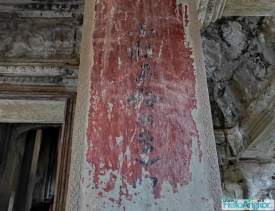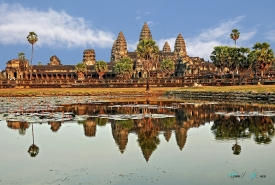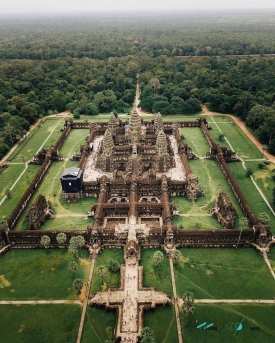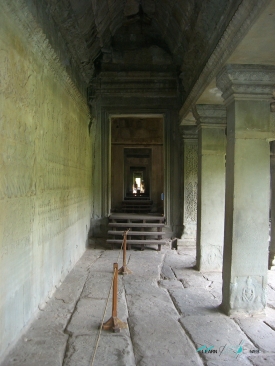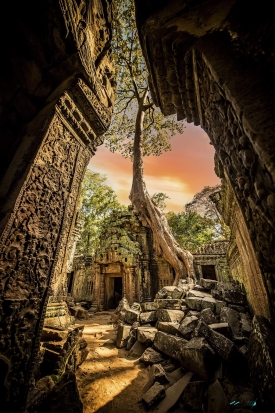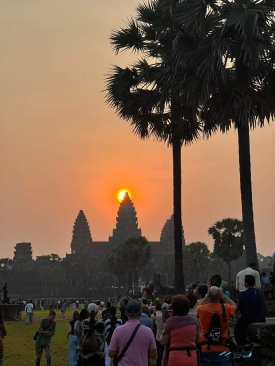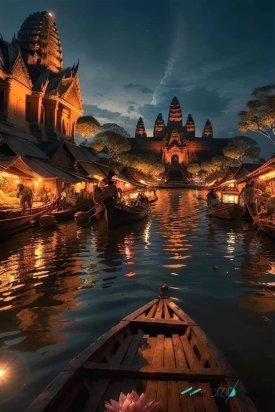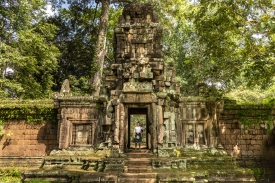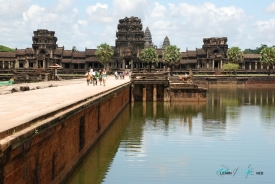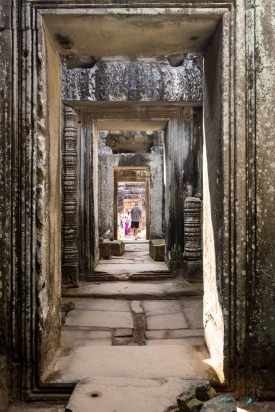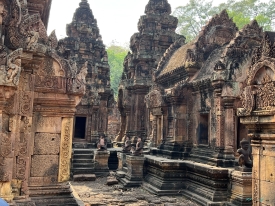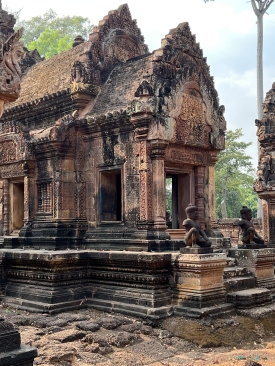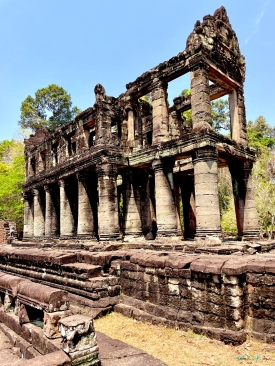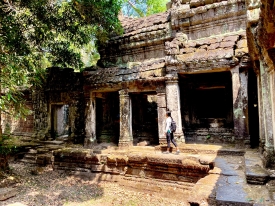Angkor Wat is a temple complex located in the province of Siem Reap, Cambodia. It was built by the Khmer King Suryavarman II in the early 12th century, as a Hindu temple dedicated to the god Vishnu. It was later converted into a Buddhist temple, and it remains a place of worship and pilgrimage for Cambodians to this day.
The temple complex is believed to have been built over a period of around 30 years, using a workforce of over 10,000 laborers.
Angkor Wat was designed to represent Mount Meru, which is considered to be the center of the Hindu universe. The temple's central tower represents the peak of the mountain, while the moat and surrounding wall represent the mountains and oceans that surround Mount Meru.
The temple is famous for its intricate carvings, which cover nearly every surface of the temple complex. The carvings depict scenes from Hindu mythology, as well as historical and cultural events from the Khmer Empire.
Angkor Wat is a UNESCO World Heritage site, and it is also listed as one of the Seven Wonders of the World. The temple complex attracts millions of tourists every year, and it is one of the most popular tourist destinations in Southeast Asia.
The restoration and conservation work at Angkor Wat has been ongoing for several decades, and it has been a collaborative effort between the Cambodian government and international organizations such as UNESCO. The work has included the installation of drainage systems, the reinforcement of structures, and the conservation of the temple's fragile carvings and sculptures.
In addition to Angkor Wat, there are several other temple complexes in the area that are also worth visiting, including Angkor Thom, Bayon Temple, and Ta Prohm.
Architecture
The temple complex covers an area of over 400 acres, and it is one of the largest religious monuments in the world. Its architecture is a fusion of Khmer and Indian styles, and it features elaborate carvings and sculptures depicting Hindu and Buddhist themes. The central tower of the temple is 213 feet tall and is surrounded by four smaller towers. The entire complex is surrounded by a moat and a wall that is over two miles long.Functions
The exact functions of Angkor Wat are not fully understood, but it is believed to have served as a temple, a mausoleum, and a palace for the Khmer rulers. The temple was also used as a center of education and scholarship, and it was home to a large number of monks and scholars.Rediscovery
Angkor Wat was largely abandoned in the 15th century, and it remained hidden in the jungle for centuries. It was rediscovered by a French explorer in the late 19th century, and it has since become one of the most popular tourist destinations in Southeast Asia.Restoration and Conservation
Angkor Wat has undergone extensive restoration and conservation efforts in recent years, due to the effects of weather, erosion, and tourist activity. The restoration work has been carried out by international teams of experts, and it has included the use of modern technologies to preserve and protect the temple complex.How to Get There
The easiest way to get to Angkor Wat is to fly into the Siem Reap International Airport, which is located about four miles from the temple complex. There are also bus and train services that connect Siem Reap with other cities in Cambodia.Facts and details about Angkor Wat
Angkor Wat was built during the Khmer Empire, which was one of the most powerful empires in Southeast Asia. At its peak, the empire covered parts of modern-day Cambodia, Thailand, Laos, and Vietnam.The temple complex is believed to have been built over a period of around 30 years, using a workforce of over 10,000 laborers.
Angkor Wat was designed to represent Mount Meru, which is considered to be the center of the Hindu universe. The temple's central tower represents the peak of the mountain, while the moat and surrounding wall represent the mountains and oceans that surround Mount Meru.
The temple is famous for its intricate carvings, which cover nearly every surface of the temple complex. The carvings depict scenes from Hindu mythology, as well as historical and cultural events from the Khmer Empire.
Angkor Wat is a UNESCO World Heritage site, and it is also listed as one of the Seven Wonders of the World. The temple complex attracts millions of tourists every year, and it is one of the most popular tourist destinations in Southeast Asia.
The restoration and conservation work at Angkor Wat has been ongoing for several decades, and it has been a collaborative effort between the Cambodian government and international organizations such as UNESCO. The work has included the installation of drainage systems, the reinforcement of structures, and the conservation of the temple's fragile carvings and sculptures.
In addition to Angkor Wat, there are several other temple complexes in the area that are also worth visiting, including Angkor Thom, Bayon Temple, and Ta Prohm.



